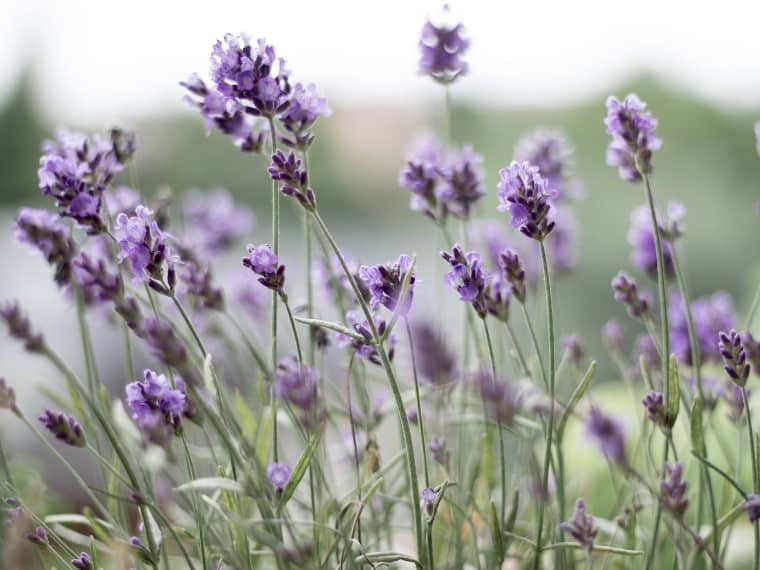What color is lavender? Today you will learn everything about the lavender color. You’ll also discover the different shades of lavender as well as where the meaning of lavender can be found.
Lavender is a beautiful and calming color used throughout history to evoke feminity, gentleness, relaxation, and tranquility.
From the lightest pastel to the darkest amethyst tones, lavender comes in various shades. With its calming vibes and charming delicacy, it’s no wonder why this hue is so popular!
What Color is Lavender?
Is lavender purple? That’s a question we all ask ourselves.
Lavender is a pale shade of purple with a slight bluish tint. In terms of color meanings, lavender represents femininity, youthfulness, and tranquility. Moreover, this warmhearted color has a loving and caring side.
Is Lilac the Same as Lavender Color?
No, lavender and lilac are two different pale shades of purple. However, lilac is a purple with a pinkish tinge, while lavender is a bluish-tinged purple.
Lavender
Hex Code: #E6E6FA
Lilac
Hex: #C8A2C8
What about the meaning and symbolism of the color lavender?
Lavender Color Meaning
What does the color lavender represent?
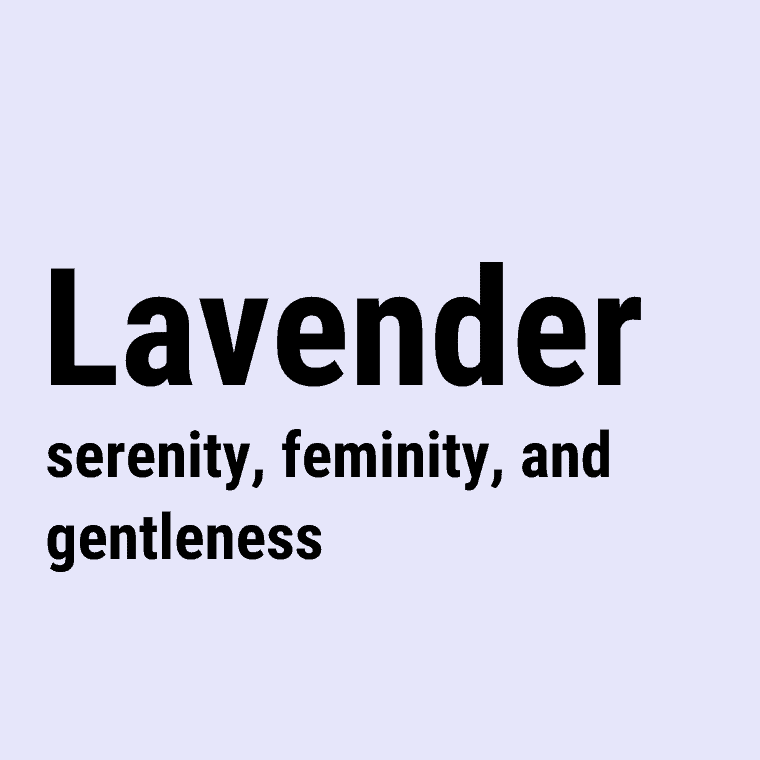
Lavender symbolizes femininity, delicacy, and relaxation. Furthermore, lavender is the color of grace and beauty. Because of its association with monarchy, lavender has a royal vibe, like the color from which it is derived (the color purple).
Lavender also relaxes, soothes, and promotes healing. Since the flower that gave the color its name grows in spring, it is often associated with springtime and new beginnings.
The meaning of lavender color, which is linked to relaxation, stems from the therapeutic properties of the plant that it is named after. [1]
Despite its delicacy, lavender encourages productivity and creativity. That’s because it combines the productivity-boosting effect of blue with the creativity of purple.
On the other hand, lavender can be seen as lethargic, childish, and indecisive. It really lacks a sense of urgency.
Lavender Symbolism
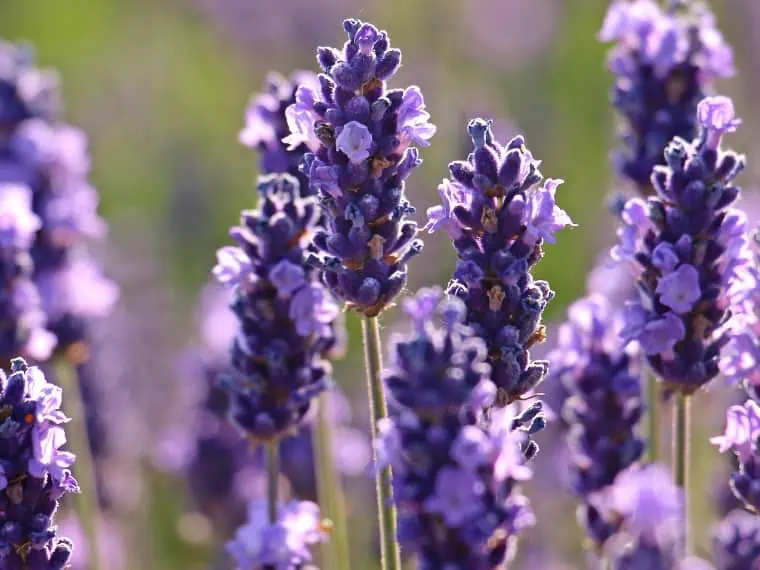
Lavender is a beautiful and unique color that holds different meanings in various cultures worldwide.
In Christianity, the meaning of lavender is linked to vitality and youthfulness. Therefore, it is an important color for celebrating the resurrection of Jesus Christ (Easter). Furthermore, lavender carries rich symbolism and is about optimism and the new stages of life.
Western cultures often associate it with royalty, femininity, and elegance.
In North America and Europe, the meaning of lavender is related to springtime. It is also a symbol of femininity, so it is used in women’s fashion.
However, in East Asian cultures, lavender is linked to spirituality and purification.
Buddhists believe the color represents contemplation and tranquility and is often used in temples and meditation spaces.
In the Middle East, lavender is associated with emotional healing and protection.
The Jews saw it as a holy color because they made oil from the plant of the same name for ritual anointing.
Today, lavender is even used in nurseries and bedrooms for little ones because it’s a more mature color than the Baby pink version.
Despite the different meanings of lavender, one common thread is its representation of peace and serenity.
A Brief History of Lavender Color
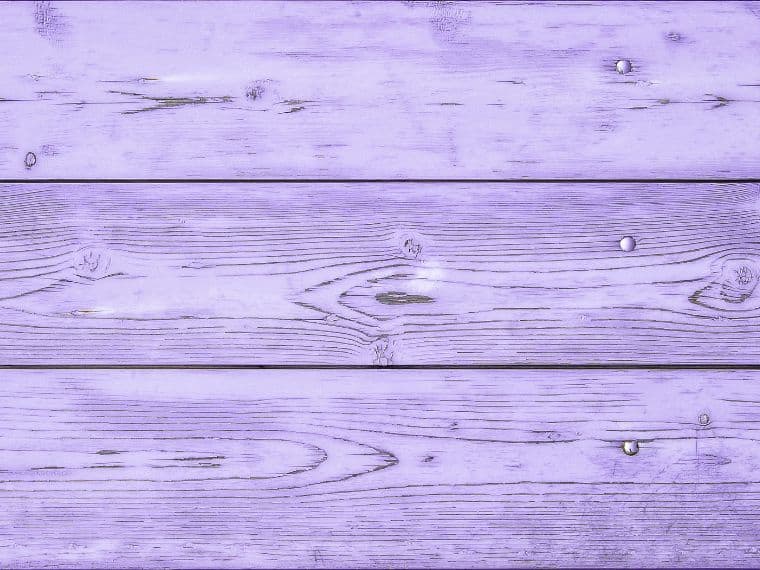
The history of lavender color cannot be separated from the flowering herb of the same name, which is native to the Mediterranean region.
The color lavender has been around for milennia, with its roots tracing back to the ancient Greeks and Romans.
Thanks to the use of the plant since 2500 years ago, lavender has a rich history.
In Ancient Egypt, it was popular for mummification. The Phoenicians also used lavender for everything from cooking to bathing. At the same time, Arabian women used lavender for washing their hair.
Thus, it is considered one of the oldest colors, as it was mentioned in Ancient Greece as early as the 4th century BC.
The color derives from the flower of the same name. This was used in clothing, pottery, perfumes, and even medicines due to its soothing scent and calming properties.
Lavender’s calming properties have also made it a favorite among cultures throughout history.
The word “lavender” is derived from the Latin verb “lavare,” which means “to wash.” Moreover, lavender got its name from the fact that it was widely used in baths to help purify the body and spirit.
During the Middle Ages, this color was associated with royalty and luxury as wealthy families used lavender dyes on their fabrics. By the Victorian era, this hue became popular for wedding gowns due to Queen Victoria’s fondness for it.
Queen Victoria requested that lavender be spread throughout the castles, from perfumery to floor cleaning.
In Medieval Europe, lavender symbolized purity, faithfulness, and cleanliness. As a result, it became popular among royalty, who often wore garments dyed in shades of lavender or even used it as a perfume scent!
By the Baroque period of art history, lavender was associated with modesty and innocence.
The color “lavender” was first mentioned in English in the 16th century. It was used to refer to a light lilac or purple hue.
During this time, lavender symbolized humility, innocence, and purity and became popular among royalty due to its association with modesty.
Today, lavender is associated with serenity, grace, and femininity.
Shades of Lavender
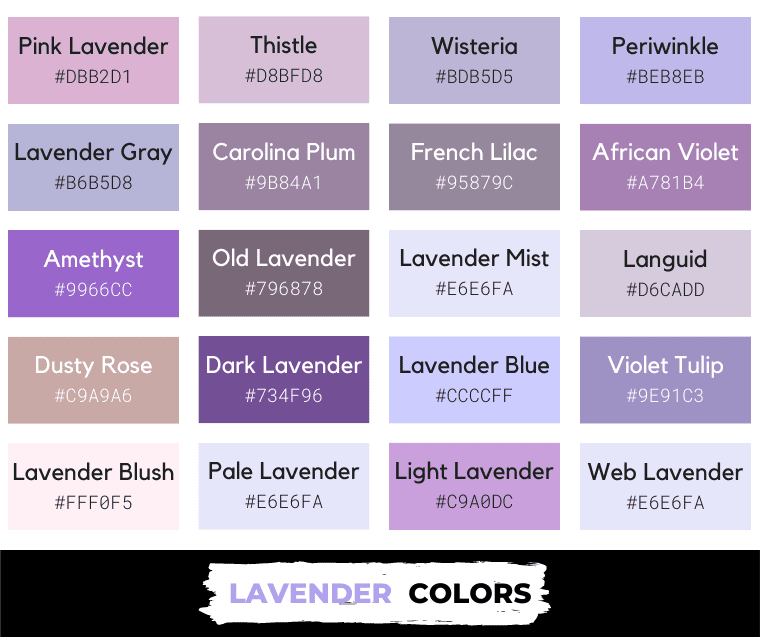
The lavender color can range from light to dark, and there are a variety of shades in between.
Its shades range from light to deep purple or grayish-blue tones, and its hex codes also vary between hues. Some of these include:
- Lavender Blush
- Thistle
- Lavender Gray
- French Lilac
- Violet Tulip
- Dark Lavender
These different hues create beautiful effects when used in combination with other colors or on their own. For example, lighter shades such as pale lavender, lilac, and mauve are perfect for creating a romantic and relaxing atmosphere.
Meanwhile, bolder shades like lavender gray, deep purple, and regal plum can provide an air of sophistication.
While there is only one true color called lavender (Hexcode: 95879C), many other shades can be mixed.
For instance, Blue Violet (#6A5ACD) is a much darker shade of lavender, while Lavender Light (#E6E6FA) offers a soft and subtle look.
Other popular shades are Thistle (#D8BFD8), Lavender Blue (#CCCCFF), and Lavender Magenta (#EE82EE).
Whether you’re looking for an accent color or something more dramatic, there are many shades of lavender from which to choose.
Floral Lavender
Floral lavender is a light, muted purple color with hints of blue and pink (also known as lavender pink).
It was first mentioned in English in 1930′ in the book A Dictionary of Colors, along with other shades: old lavender, lavender-gray, and lavender-blue.
Other colors that describe this hue are lavender blush, mauve, orchid, lilac, and wisteria. Another name for lavender is periwinkle.
Floral Lavender
Hex: #B57EDC
Web Lavender
Web lavender is a light, medium-toned purple color with hints of blue and pink. The hex code for web lavender is #E6E6FA, and the RGB value is (230, 230, 250).
It is a lighter shade than floral lavender and can be found in the HTML/CSS color palette. Additionally, many web designers favor this shade of lavender.
Web Lavender is also known as lavender mist. However, this term sometimes refers to a slightly darker shade of lavender.
Web Lavender
Hex: #E6E6FA
Digital Lavender
Digital lavender is a cool, muted shade of grayish purple which symbolizes serenity, stability, optimism, and hope. The digital lavender hex code is #988EAE.
Digital Lavender
Hex: #988EAE
Languid Lavender
Languid lavender is a pale grayish violet lavender with hints of blue and pink.
Moreover, this color originates from the Plochere color system, which was developed in the 1940s by French designer Georges Valàs and his wife, Mado.
The Plochere system assigns numerical values to certain hues and shades of lavender. For example, the numerical code for Languid Lavender is 15-3217, and it is classified as a light hue with low saturation.
Languid Lavender
Hex: #D6CADD
Light Lavender
Light lavender is a pastel shade of purple with a soft, muted hue. The light lavender hex code is #C9A0DC. This color is sometimes referred to as Wisteria.
The color was first used in interior decorating in the late 19th century but was popularized by Crayola crayons when they debuted their “Lavender” color in 1998.
Light Lavender
Hex: #C9A0DC
Pale Lavender
Pale Lavender is a very light and soft shade of purple, often described as having a dusty hue. It has a hex code of #E6E6FA and was first created in interior decorating in the early 20th century.
Pale Lavender features a softer, muted tone than light Lavender (hex code #C9A0DC), which has a brighter, more vivid appearance. Moreover, this shade of lavender has a pastel look that brings a touch of romanticism.
Pale Lavender
Hex: #E6E6FA
Violet Tulip
Violet Tulip is a rich shade of lavender, with a hex code of #9E91C3. T color was created in the early 20th century and was popularized by Pantone for its vivid tone compared to other shades of lavender. The color has an almost mulberry-like hue with a hint of pink undertones.
Violet Tulip
Hex: #9E91C3
Lavender Blue
Lavender Blue is a unique shade of lavender with more blue in its composition, which makes it a light bluish violet. Compared to other shades of lavender, this color has a bluish undertone and a brighter, more vivid appearance. The hex code for lavender blue is #CCCCFF.
Lavender Blue
Hex: #CCCCFF
Lavender Mist
Lavender Mist is a pale lilac-colored hue with a blue undertone. The lavender mist hex code is #E6E6FA. Compared to lavender gray, it is lighter and more muted in appearance.
This lighter shade creates a soft, romantic look and pairs well with pastel pinks and blues.
Darker shades of lavender, such as lavender indigo, are richer and more saturated.
Lavender Mist
Hex: #E6E6FA
Old Lavender
Old lavender is a smoky shade of lavender that resembles dried lavender. Old lavender is actually a mix of magenta with a lot of black.
Old Lavender
Hex: #796878
More Shades of Lavender
Shades of lavender range from pinkish-tinged purples to blueish variations that resemble pale violets.
Lavender Blush
Hex: #FFF0F5
Soft Lavender
Hex: #F6E5F6
Pink Lavender
Hex: #DBB2D1
Thistle
Hex: #D8BFD8
Wisteria
Hex: #BDB5D5
Periwinkle
Hex: BEB8EB
Lavender Gray
Hex: #B6B5D8
Carolina Plum
Hex: #9B84A1
French Lilac
Hex: #95879C
African Violet
Hex: #A781B4
Amethyst
Hex: #9966CC
Dark Lavender
Hex: #734F96
Affair
Hex: #6F4685
How to Make Lavender Color Paint
Lavender is a shade of purple. Purple is situated on the color wheel between red and blue. So, you can create shades of lavender that lean towards cool tones like bluish-purple or warmer tones like reddish-purple.
While mixing more blue results in a cool lavender color, extra red helps create a lilac color.
To create lavender, mix a dark, cooler purple base by blending red and blue, then add white paint until you reach the desired color. Although it seems simple, each color carries a bias, meaning they lean towards other colors.
So, what colors make lavender? To get the perfect lavender, use one of the following paint colors:
- Quinacridone magenta
- Permanent rose
- Cerulean blue
- Ultramarine blue
For example, if you mix cerulean blue with permanent rose, you’ll get a dark purple with gray undertones.
If you want to create a purple cooler first, mix red with more blue. If you change the proportions, you’ll get a warmer purple.
To lighten the color, you can add a little white paint until you reach the desired lavender or lilac shade.
For a darker and cooler purple, mix cerulean blue with permanent rose. If you want a more vibrant purple, mix cyan with magenta – two primary colors in the CMYK color model.
You can also use pre-mixed purple paint and mix it with white paint until you reach the desired shade of lavender.
It’s essential to consider the paint composition before you buy it, as any color carries a bias.
For example, mixing blue with red paint, which has a yellow bias, results in a muddy brown or grayish color.
So, avoid blue paints with a green bias or red paints with a yellow bias to get a lovely shade of purple.
What Colors Go with Lavender?
Lavender can be paired with various colors, including neutrals like white, beige, and gray. Other colors that go with lavender are yellow, pink, purple, green, and pastel shades.
If you prefer a bolder combination, you can match it with brown or even black.
Mint and Lavender
Green is one of the most refreshing colors that go with lavender.
Likewise, lavender goes well with green mint. Both colors are pastel shades and have a soft and soothing quality. One idea would be to paint the walls mint green and add lavender accessories.
Mint Green
Hex: #99EDC3
Medium Lavender
Hex: #C2AFF0
Light Yellow and Floral Lavender
This color combination brings both tranquility and warmth. Using both as accent colors rather than a main color is better.
Light Yellow
Hex: #FFDB58
Floral Lavender
Hex: #B57EDC
Turquoise and Lavender
Turquoise is one of the most relaxing colors that go with lavender. This combo creates a relaxed and eye-catching look at the same time. Both colors are cool-toned and possess refreshing and calming attributes.
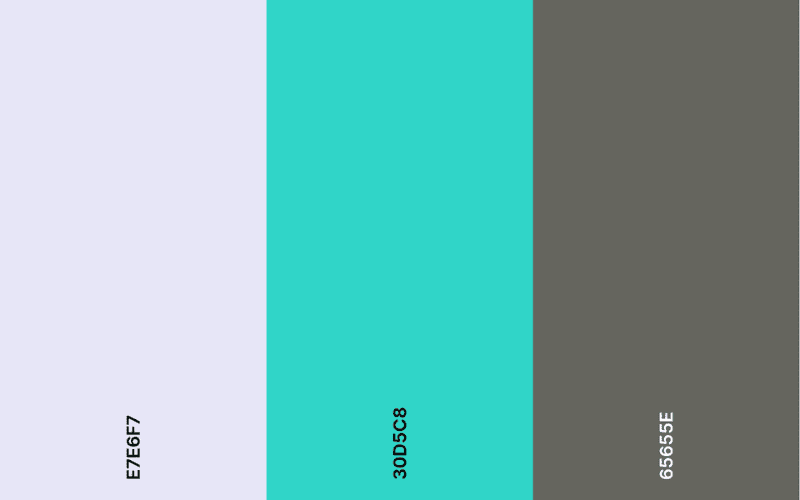
Cool Beige and Lavender
Lavender, like any color, goes well with neutrals. For example, you can match a bolder shade of lavender (like African violet, with the hex code #8C7AA9) with cooler shades of beige like dessert sand (#D8BCAB). These colors go perfectly together, as they both contain cool undertones. For contrast, you can use a dark purple.
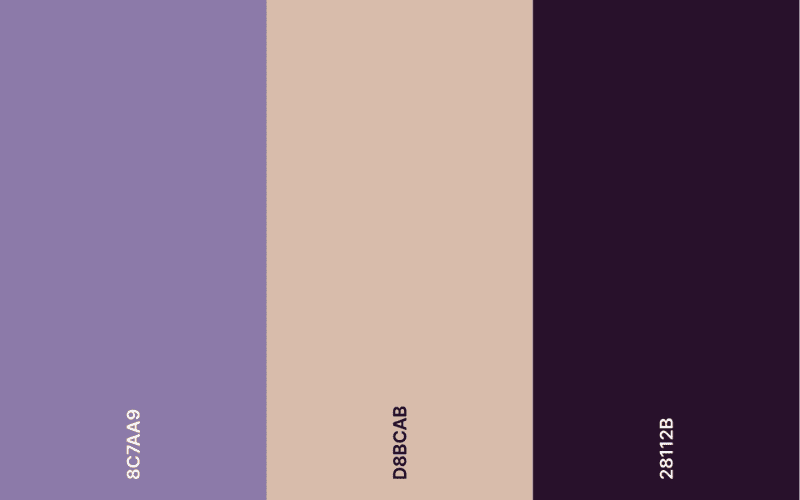
Warm White and Lavender
The combination of lavender and warm white creates a more vintage vibe. Moreover, it is a popular palette on the Côte d’Azur (France), this warm white working as a perfect neutral for the lavender’s coolness.
For example, a great lavender color scheme includes periwinkle (#BEB8EB), english violet (#48304D) and dutch white (#FCECC9).
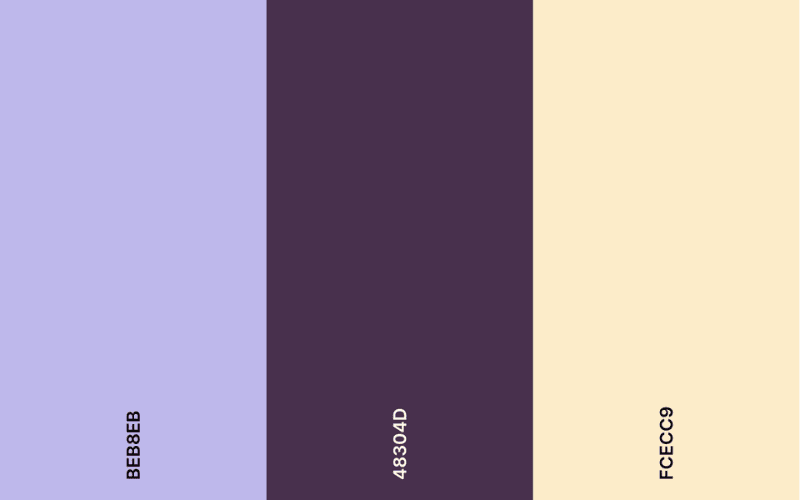
Pastel Pink and Lavender
Both pink and lavender evoke calm and relaxation. Furthermore, pink is associated with kindness and compassion. Even on the color wheel, pink works well with lavender, making it an ideal combo if you want to bring a more feminine vibe to your room.
Our example provides a lavender color scheme which includes floral lavender (#B57EDC), wenge (#604D53) and misty rose (#FFDBDA).
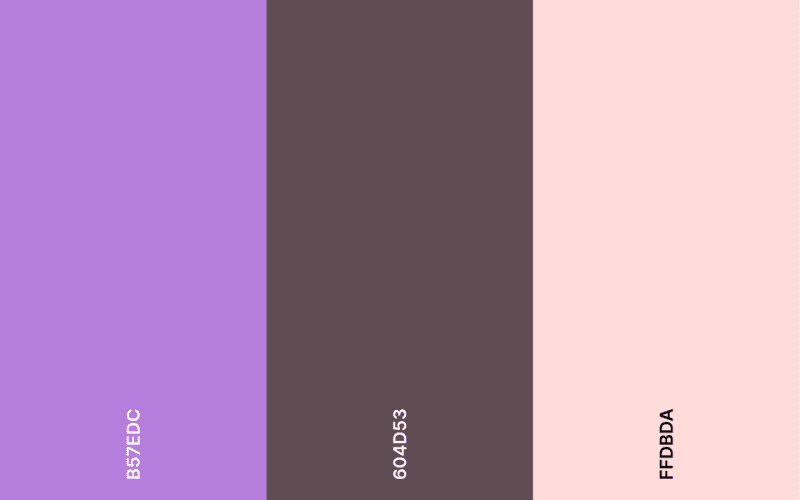
Last Words on the Color Lavender
Lavender means: youth, delicacy and serenity
Effects of lavender: supports, relaxes, and provides a sense of order
Positive traits: femininity, relaxation and elegance
Negative traits: lethargic and lazy
Lavender is the color of gentleness, youth, and serenity. What’s more, it is extremely pleasing to the eye. It is neither too aggressive nor too bland. This color is not only relaxing, but it can also help you achieve a deeper state of meditation.

